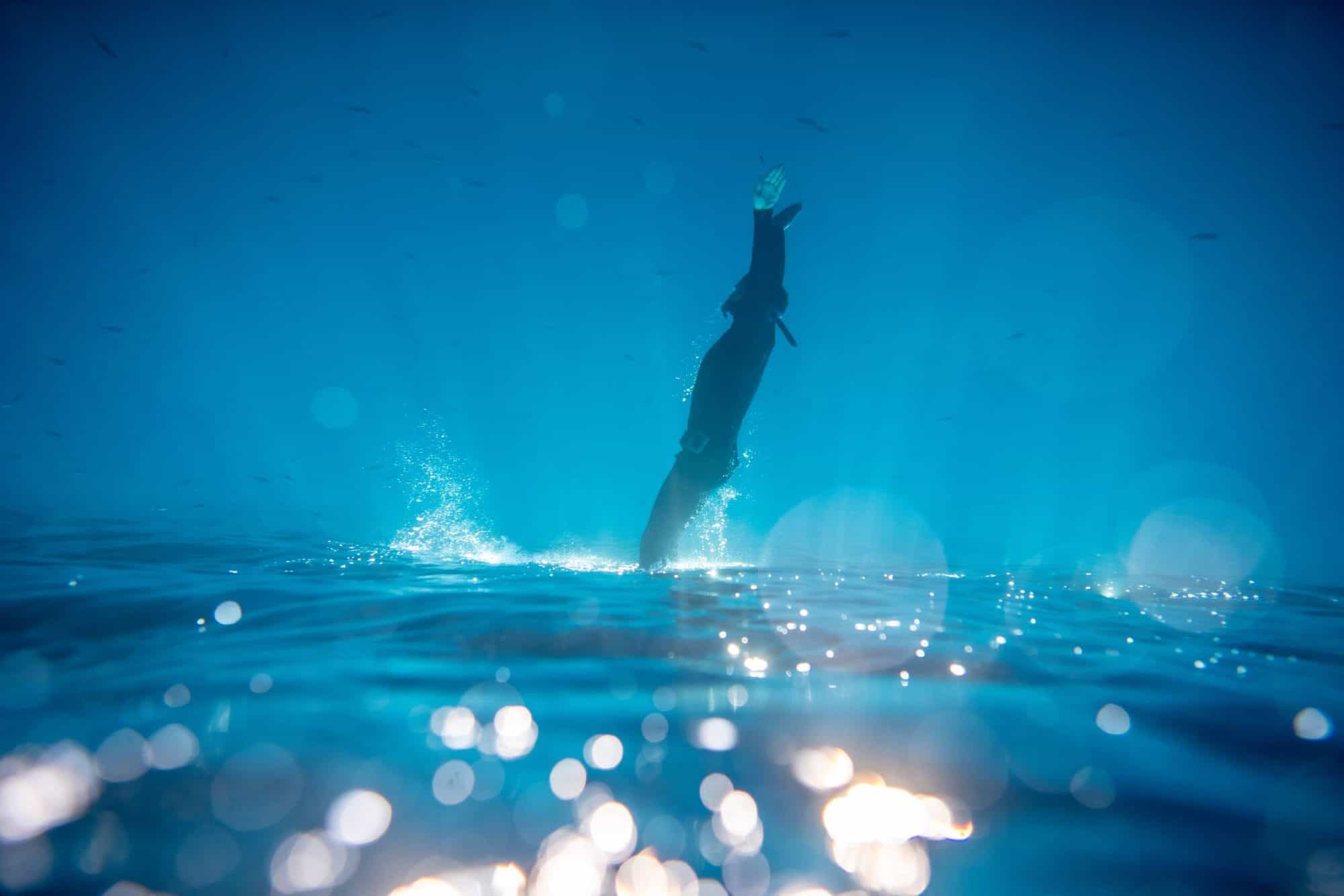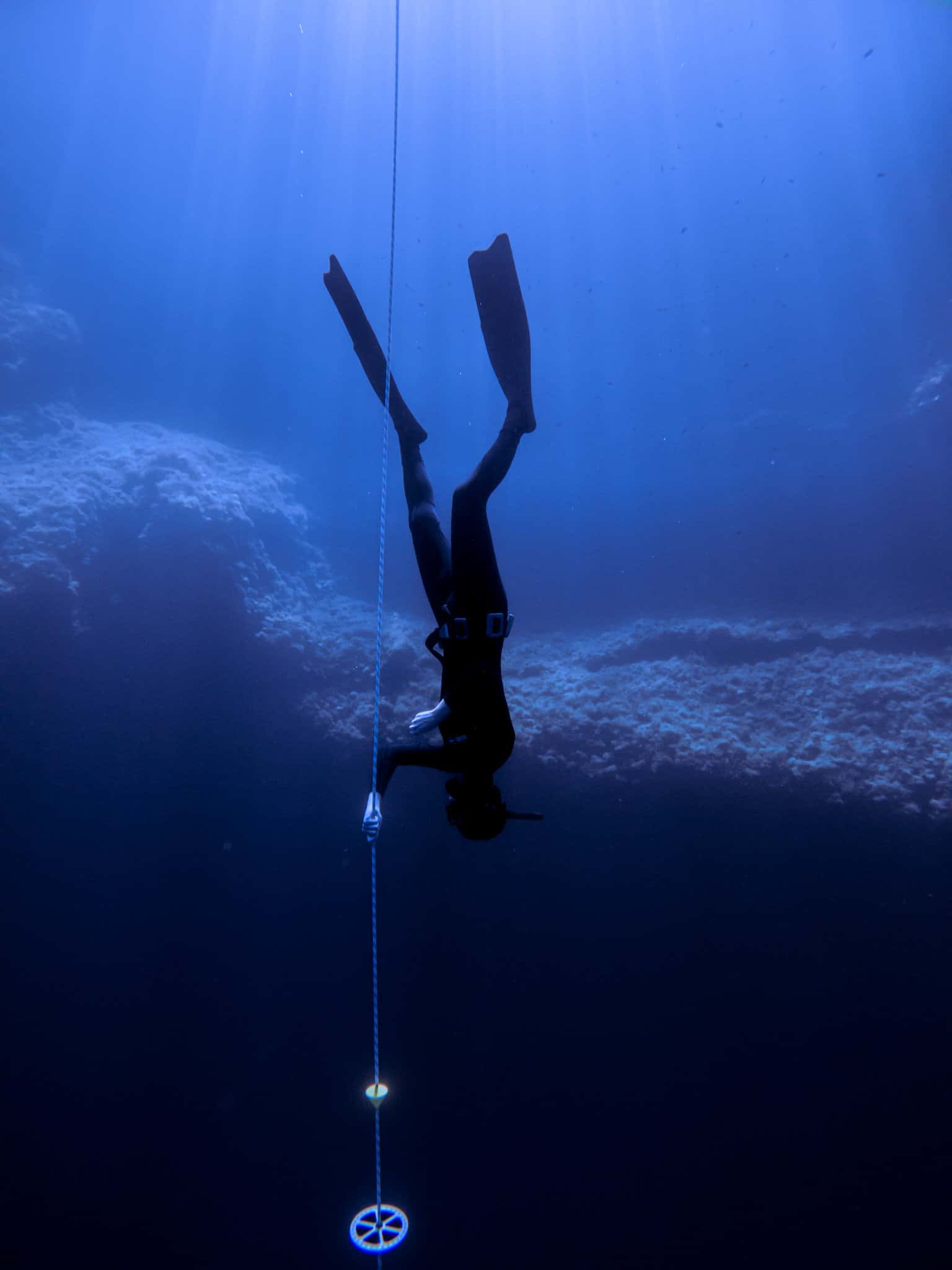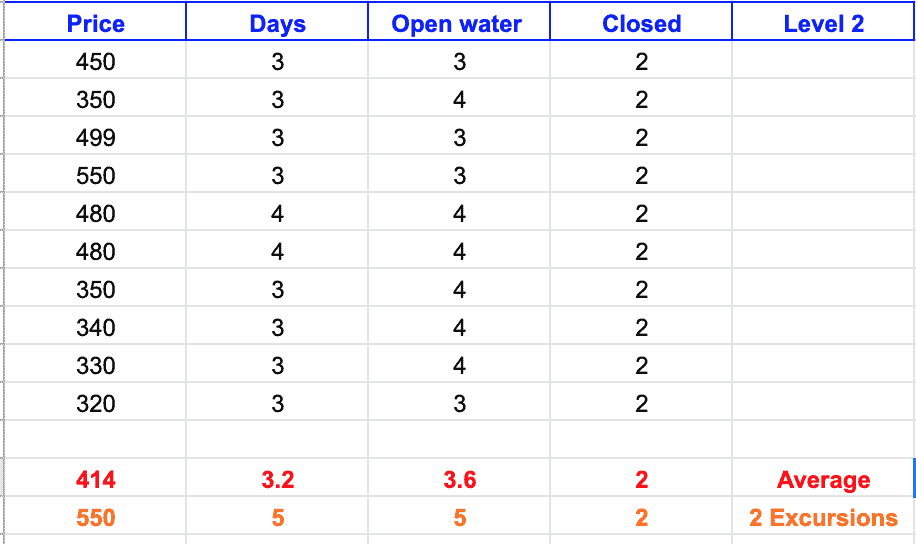Established by two of the world’s most successful freedivers, the late Natalia and her son Alexy Molchanov, originally for the purpose of producing top quality equipment made by freedivers for freedivers, the mother and son duo eventually decided to create an education system for the Freediving Federation.
A few years later, co-founders Alexey Molchanov and Chris Kim, together with founding member Adam Stern believed that the SCUBA diving industry would take over the freediving world thanks to their big budgets and wide network. The freedivers determined what was missing from the current education system and they took it upon themselves to create an improved education programme, as well as establish a freediving community where they could connect with other freedivers across the globe to share experiences. This is how the Molchanovs Movement came to be. Its mission, a simple one – “To raise the level of knowledge of all freedivers and build a passionate community of freedivers whilst making the best gear.”
What is the Molchanovs Movement?
A global community of passionate freedivers, the Movement offers members access to the latest freediving education and training, workouts, badges and challenges, while it also enables freedivers to obtain exclusively the latest and best freediving gear.
Once you take a Molchanovs course, you’re automatically part of the Movement, however, you can also join even if you are certified with another freediving education system. All you need to do is fill in the application form.
So what will you gain from joining the Molchanovs Movement?
Form part of a global community
No matter where you are located, your freediving level and experience or what your freediving goals are, anyone can join the Movement. You’ll be able to access the Molchanovs Dashboard where you can start off by creating your profile and once your instructor sets up your course, you will have access to the education system, you will be able to download your material and progress your freediving education at your own pace. You will also find the knowledge review, limited liability release form, medical questionnaire, as well as your exam. And best of all, you can connect with other freedivers, share your ideas and discuss your training through the Molchanovs platform.
Access Base Training
Base training is a range of freediving programmes aimed at helping divers improve on their skills and keep them motivated once they have completed a course. More often than not, most freedivers stop diving after completing a course and presume they can simply just jump right back into it when the mood strikes. This is far from the truth. Freediving requires constant training so with the Molchanovs system, you can continue expanding your freediving knowledge, while meeting like-minded individuals with a passion for freediving.
To be admitted into Base Training you must meet the following criteria:
- You must have completed a Molchanovs online (T), Lap (L) or Wave course.
- You must hold a certification by another agency and pass the Base Training Induction Online assessment evaluated by a person assigned by the Molchanovs Movement Board.
- You must hold a certification by another agency and pass a Base Training Induction assessment with a Molchanovs instructor.
The Base Training has three elements to it, the Workout of the Week (WOW), the benchmark workouts and the badges. Below is a breakdown of each element.
Workout of the Week
As its name suggests, this consists of a workout that is created on a weekly basis by some of the top freedivers. There are workouts for each Base Training level and these include specific exercises for open water, pool, dry training and equalization. Most Deep Med clients don’t have access to the sea after their freediving holiday, so these exercises are the perfect filler to keep you going. What’s more, your training can always be scaled to your level.
Benchmark workouts
Benchmark workouts are a good way to measure whether you are prepared for the next level. Usually during these workouts, a Molchanovs instructor will assess your freediving skills and abilities and decide which level you should train for.
Badges
Badges are a way of recognising your freediving accomplishments and milestones. Some badges are performance-based, whilst others are tied to interesting and fun challenges that you would have accomplished. These badges are awarded by a Molchonvs instructor and are the perfect way to focus on your next personal achievement.
What is the Molchanovs Freediving Education?
The founding principles of the Molchanovs Freediving Education are based on Natalia’s philosophy and strategies. In fact, the educational manuals are brimming with her quotes and freediving poetry and whilst all are beautiful in their own way, one strikes a chord with Deep Med – ‘You should always enjoy the initial stages of training, otherwise what is the point of doing it?’
The Molchanovs Education System starts off by teaching you the very basics of freediving and goes on to transforming you into an elite freediver, while thanks to the way in which the system is structured, you can achieve this in a slow, methodical and safe way.
What sets Molchanovs apart from other freediving education systems is that it offers online theory courses known as Online T1/T2/T3, where you can complete the theory section of any of the below courses online with a Molchanovs instructor. Offering you the perfect opportunity to develop a number of dry skills like your fine motor skills so that you can equalise more efficiently even if you don’t have access to the water, the instructor will provide you with the necessary feedback and will introduce you to your very first breath-holds. Once you have completed all classes, you will have to take the online exam and receive your T-certification which will grant you access to the Dry Base Training programme, while it will prepare you for the courses outlined below.
There are four open water levels, each of which are called Wave courses, while each Wave also has a Lap course. Lap courses are pool disciplines that cover the same theory and requirements as the corresponding Wave course, but are held in a pool instead of at sea. If you do not manage to complete all the necessary requirements for the open water skills during the Wave course, you can be certified under the Lap course.
Wave 1 & Lap 1 course
An introductory course that will test your abilities and push you to discover the underwater world in the most natural way by simply holding your breath, the one requirement for joining this course is that you must be able to swim unassisted for two hundred metres, while you must be healthy.
During the course you’ll learn the very basics of physiology and how your body adapts in this challenging environment so that you can dive safely and reach your full potential. Boyle’s law, Archimedes principle and their application in the water are also covered, as well as the Mammalian Dive Reflex, how equalisation works and how to perform it, all with the aim to help you become an autonomous freediver. In addition, you’ll get the chance to practice pool disciplines both with and without fins and to sharpen your technique so that you will be able to dive in open water.
Safety is crucial in freediving. This is why it is practiced through various drills and buddying, while you will also learn about the different freediving equipment like masks and snorkels, wetsuits, weight belts, fins and safety equipment, amongst others.
By the end of the course, you will be able to dive to a depth of between 12 and 20 metres.
In order to complete the Lap course and obtain your certification:
- You must be able to hold your breath for 1 minute and thirty seconds.
In order to complete the Wave 1 and proceed to the Wave 2 course you must meet the following criteria:
- Constant weight bi-fins 12-20 metres
- Constant weight buddying 2-10 metres
- Rescue from 6-10 metres
Wave 2 & Lap 2 course
Take your freediving skills up a notch with the Molchanovs Wave 2 course. To take part in this, you will need a Wave 1 certificate to attend a Wave 2 course or a Lap 1/Wave 1 for the Lap 2 course. However, you can still participate in the course if you have a certificate from another agency, as long as you pass a crossover evaluation.
During the course, you’ll have the opportunity to better your no fins technique and learn the basics of the monofin technique, while you’ll get to expand your knowledge of freediving physics principles through Henry and Dalton’s laws and explore how they affect your body. In addition, you’ll improve your Frenzel equalisation and master new techniques through different exercises and drills.
Mindfulness is a big part of the system, so you will learn how to apply these techniques in different circumstances, whereas you’ll broaden your safety education on decompression illness and blackouts, whilst learning advanced rescue techniques.
Interestingly, the course also covers the history of freediving and its development along the years.
In order to complete the Lap 2 course:
- You must be able to hold your breath for two minutes and thirty seconds.
- Dynamic bi-fins 50 metres
- Dynamic no fins 35 metres
In order to complete the Wave 2 and proceed to the Wave 3 course, you must meet the following criteria:
- Constant weight bi-fins & free immersion 24-30 metres
- Constant weight no fins 15 metres
- Constant weight buddying 10-15 metres
- Rescue from 15 metres
Wave 3 & Lap 3 course
Work towards diving comfortably to a depth of between 34 and 40 metres and perform the various techniques perfectly in both the pool and open water disciplines by taking on the Wave 3 or Lap 3 course. During the course you will be introduced to the advanced versions of the Frenzel and moutfill techniques, including reverse packing, while you’ll get to practice attention deconcentration, a new technique to add to your mental skills. Your instructor will provide you with dry exercises for you to practice that will serve as a starting point to these advanced equalising techniques.
Functional residual capacity (FRC) dives are also introduced so that you can learn how to simulate depth and you’ll also practice stretching techniques, lung packing and reverse packing which are all essential for deep diving.
You must obtain a Wave 2 certificate to attend the Wave 3 course or a Lap 2/Wave 2 certificate for the Lap 3 course. Alternatively, a certificate from another agency will also do, as long as you pass a crossover evaluation.
In addition, after completing the Wave 3/Lap 3 course you can act as an assisting instructor, while the course serves as a stepping stone towards becoming an instructor or a deep diver.
In order to complete the Lap 3 course:
- You must be able to hold your breath for 3 minutes and thirty seconds.
- Dynamic bi-fins 75 metres
- Dynamic no fins 50 metres
In order to complete the Wave 3 course, you must meet the following criteria:
- Constant weight bi-fins and free immersion 34-40 metres
- Constant weight no fins 25 metres
- Constant weight buddying 20 metres
- Rescue from 20 metres
- Surface tow 20 metres
Wave 4 / Lap 4
If freediving competitively has always appealed to you, then this is the course where you’ll nail the skills and finesse required for competitive freediving. Designed for advanced freedivers, during this course you’ll address how to approach competitions and how to establish the right tactics for your dives, while you’ll delve deeper into aspects like periodisation principles, fine-tuning your technique, how to achieve maximum performance, the right diet and so much more.
By the end of this course you should be able to:
- Hold your breath beyond 4 minutes and 30 seconds.
- Dive to 50 metres in both Constant Weight and Free Immersion.
- Dive to 35 plus metres with no fins.
- Dive 100 metres in the pool dynamic.
- Dive to 75 metres in the pool dynamic with no fins.
- Constant weight buddying at 30 metres.
- Rescue from 25 metres, with a 50 metres surface tow, including rescue breaths.
What is the Molchanovs Crossover Evaluation?
There are no hard and fast rules to crossing over to Molchanovs from another agency. Instead, an instructor will have to evaluate the performance of each student.
Freedivers who are 18 years old (individuals who are between 16 and 18 years old may also participate as long as they provide parental consent) can sign up only if:
The student passes all the requirements outlined on the course’s completion form.
The student passes all exams whether written or online from prior courses they have attended.
How to register with Molchanovs
Your instructor will register the course and add you to the Molchanovs Dashboard once you have enrolled. Next, you will receive an email so that you can sign up. If you happen to be a member already, then your instructor will add you directly to the course.
So which is the best freediving course?
Ultimately, all freediving systems teach the same thing. Molchanovs does set itself apart with its base training, online community and educational materials which are packed with information, however, in the end, it all boils down to the instructor. You need to make sure that you choose someone who is experienced and is constantly keeping up with their training, so avoid instructors who do it on a part-time basis or SCUBA diving schools that are not experienced in freediving.
Ready to begin your freediving experience? Have a look at our various courses and if you’re a freediving novice, check out our coaching.


